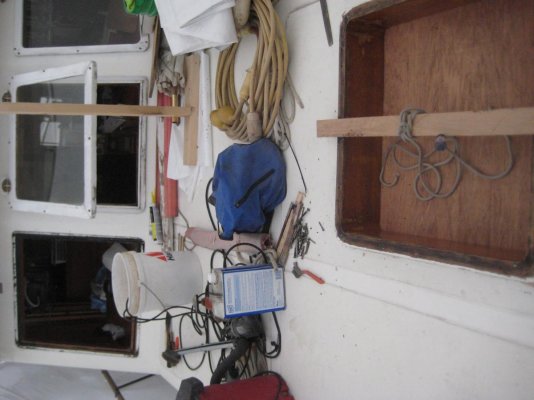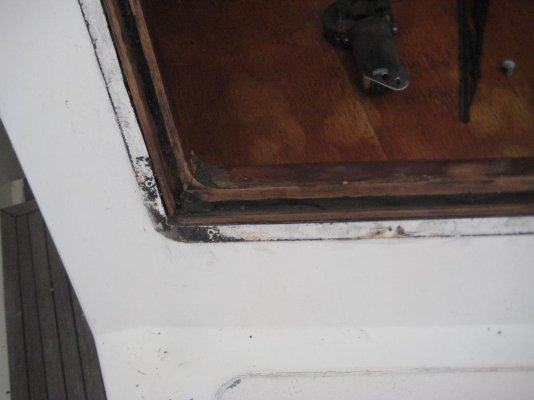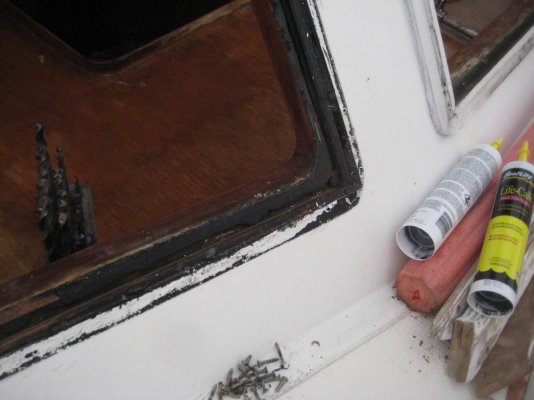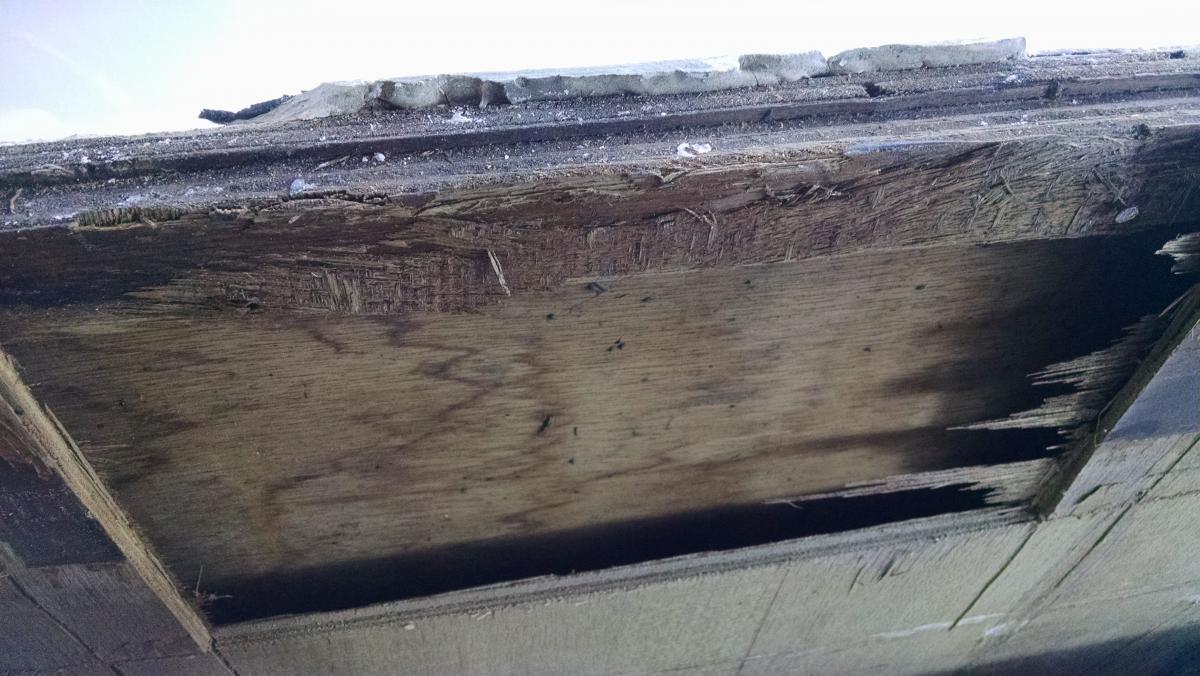DHeckrotte
Guru
I have removed the windshield from in front of the helm and had a new one made. The old laminated safety glass was delaminated and fogged. The sealant appears to have been polysulfide. Where it was intact it was utterly tenacious; where it was not, it wasn't and leaked.
The system / design is pretty poor. Any leak under the exterior trim admits water to the wood framing; it is not 'self flashing' like any decent design and decent house window would be. It would have been far better if the fiberglass exterior had been dished inwards and the glass sealed into the dish.
Happily, the interior trim is Teak, as well as the exterior. Interior damage is therefore limited to the Teak-veneered plywood and perhaps to the structure behind. The house sides appear to be a cored structure, but it's hard to verify.
Trim pieces were glued at the corners so that the thinner exterior pieces will stay in plane as the screws are tightened on soft sealant. The assembly depends upon those glued joints to be waterproof. I therefore have glued the corners again. An unattractive alternative (for varnished trim) would have been to have opened the joint space a bit and used sealant.
The window glass was bedded on polysulfide but the interior bedding has nothing whatever to do with being waterproof; leaks would simply dribble down between the interior trim and the inside of the hull 'glass. I will bed the new glass on the interior trim using butyl tape; thus there will be no mess that squeezing uncured sealant would make where I could not reach to clean.
I will bed the exterior trim in polysulfide, taking care to fill between the window frame and the fiberglass surround. Interestingly, the only readily available polysulfide is BoatLIFE-Caulk. (Their Lifeseal is a polyurethane-silicone.) Their instructions tell you to use their special primer on oily wood like Teak but essentially no one stocks this expensive elixir. I bought it and will use it.
Pics include one of the lower right (inboard) corner of the windshield. Note that the cutout in the 'glass has only about 1/16" cover by the exterior trim. I cleaned the edge of the fiberglass and gooped it full of filled epoxy; I will end up with at least 1/2" of sealant.
The system / design is pretty poor. Any leak under the exterior trim admits water to the wood framing; it is not 'self flashing' like any decent design and decent house window would be. It would have been far better if the fiberglass exterior had been dished inwards and the glass sealed into the dish.
Happily, the interior trim is Teak, as well as the exterior. Interior damage is therefore limited to the Teak-veneered plywood and perhaps to the structure behind. The house sides appear to be a cored structure, but it's hard to verify.
Trim pieces were glued at the corners so that the thinner exterior pieces will stay in plane as the screws are tightened on soft sealant. The assembly depends upon those glued joints to be waterproof. I therefore have glued the corners again. An unattractive alternative (for varnished trim) would have been to have opened the joint space a bit and used sealant.
The window glass was bedded on polysulfide but the interior bedding has nothing whatever to do with being waterproof; leaks would simply dribble down between the interior trim and the inside of the hull 'glass. I will bed the new glass on the interior trim using butyl tape; thus there will be no mess that squeezing uncured sealant would make where I could not reach to clean.
I will bed the exterior trim in polysulfide, taking care to fill between the window frame and the fiberglass surround. Interestingly, the only readily available polysulfide is BoatLIFE-Caulk. (Their Lifeseal is a polyurethane-silicone.) Their instructions tell you to use their special primer on oily wood like Teak but essentially no one stocks this expensive elixir. I bought it and will use it.
Pics include one of the lower right (inboard) corner of the windshield. Note that the cutout in the 'glass has only about 1/16" cover by the exterior trim. I cleaned the edge of the fiberglass and gooped it full of filled epoxy; I will end up with at least 1/2" of sealant.
Attachments
Last edited:




